Carrot Fritter with Sunflower, Pumpkin Seed & Harissa Sauce
One of my grandmother’s signature dishes is carrot fritters. They’re all small and irregular in shape, and are pan-fried until golden brown, sometimes on the verge of burnt around the edges. She usually serves them with broccoli rice on the side, which is actually just rice cooked with broccoli florets on top, but tastes delicious nonetheless. The simple meals I have at her place are some of the best I’ve ever had (her lentil rissoles are insane, as it’s her sautéed cabbage with peas and mint), proving that vegan food doesn’t have to be complicated to be tasty or rely heavily on expensive, hard to find ingredients.
The other day I had a sudden urge to eat the carrot fritters and made my own version of her classic, only slightly changing the shape and making one big fritter instead of various small ones. I also added chickpea flour instead of wheat flour to bump up the protein content of my fritter. This one isn’t a particularly inventive recipe, but I’m amazed at how good it tastes, especially when served with the sunflower and pumpkin sauce. I don’t generally like to brag about recipes, but this is one really is a hell of a sauce. It’s very easy to put together and doubles as a pasta and salad sauce too. Plus, it’s full of healthy fatty acids, which is good for you and your skin.
Now, into more specifics: the fritter’s “dough” might seem like it doesn’t hold together very well, but I can assure you it won’t fall apart while cooking. Using a non-stick frying pan (look for non-teflon options, like these), or seasoning your regular pan with a generous glug of olive oil is key here, since you don’t want all that crispy bits to get stuck.
Hope you like the fritter as much as I do. I’m already thinking about how I’ll style and shoot the next recipe (which happens to be today’s dinner), so see you soon!
Carrot Fritter with Sunflower, Pumpkin Seed and Harissa Sauce
Serves 2, as a main
For the Carrot Fritter
2 Tablespoons melted coconut oil or olive oil, divided
3 large carrots, grated
½ teaspoon sea salt
freshly ground pepper, to taste
1 handful fresh coriander, finely chopped
1 large garlic clove, minced
3 heaped Tablespoons chickpea flour
For the Sunflower, Pumpkin Seed & Harissa Sauce
2 ½ Tablespoons Sunflower seeds
2 ½ Tablespoons Pumpkin seeds
juice of one lime
7 Tablespoons water
1 Tablespoon olive oil
1 /2 teaspoons harissa
¼ teaspoon sea salt
freshly ground black pepper
Combine the sunflower and pumpkin seeds in a medium sized bowl. Pour one cup of boiling water over them, cover with a lid and let the seeds soak for at least 1 hour. After that time, drain and add them, along with the other ingredients for the sauce, to a blender. Blitz until you get a creamy, smooth mixture. If it seems too thick, add a little more water (1 or 2 Tablespoons should do). Adjust the seasoning before serving.
Combine all the ingredients for the fritter in a large bowl. Add 1 Tablespoon of coconut or olive oil to a small, 18 cm in diameter non stick frying pan over medium heat. When the oil is hot, but not smoking, add the carrot mixture. Using a spatula, spread the carrot mixture over the pan, smoothing the surface by gently pressing it down. Cook for 4-5 minutes. After that time, place a plate over the top of the frying pan and gently flip the fritter over. Add the remaining tablespoon of coconut or olive oil to the pan, return it to the heat and, once hot, add the fritter back in, golden side up. Fry for additional 5 minutes. Serve with the sauce.
Slow Roasted Tomatoes + Arugula-Tarragon Pesto over Socca
Chickpea flour has to be one of my favourite gluten-free flours out there. It has a lot of character (don’t even try tasting it raw, by the way) but it is, at the same time, very versatile. I make crêpes with it, savoury pancakes, use it in small amounts in cake batters (its high protein content mimics that of eggs, making it the perfect egg replacer) and many other preparations.
It wasn’t long ago that I’ve heard of socca, a chickpea flatbread typical of Nice, France. I came across a recipe for it in Ottolenghi’s Plenty, but haven’t tried it out as it called for egg whites. However, and after some research on the internet, I found out that most socca’s recipes don’t use eggs at all, requiring only three basic ingredients (chickpea flour, water and salt) and, optionally, a few dried herbs and olive oil. In this recipe, I used za’atar to flavour the batter because it goes well with the pesto and all, but you could definitely build different flavour profiles by adding different spices and herbs.
Regarding the slow roasted tomatoes: I quite like raw tomatoes, but I like them even more when slow roasted. They’re sweet and tangy at the same time and can totally transform an otherwise boring leafy salad into something out of this world.
The recipe(s) for the slow roasted tomatoes and the pesto make way more than what you will need for this particular dish but that’s the point, really, so that you have plenty to play around and use in different meals (salads, sandwiches, and so on).
Slow Roasted Tomatoes + Arugula-Tarragon Pesto over Socca
(serves 4 to 6)
slow roasted tomatoes:
1 kg / 15 medium sized vine ripened tomatoes, quartered
2 teaspoons salt
1 tablespoon olive oil
1 tablespoon balsamic vinegar
4 garlic cloves, lightly crushed
arugula-tarragon pesto:
40 g / 1/3 cup laminated almonds, preferably toasted
30 g / ½ cup packed arugula
6 g / ¼ cup packed tarragon
1 teaspoon salt
1 garlic clove, minced
2 tablespoons lemon juice
60 ml / 1/3 cup olive oil
socca:
130 g / 1 cup chickpea flour
1/2 teaspoon salt
1 ½ teaspoons za’atar
250 ml / 1 cup water
1 teaspoon olive oil, to grease the pan
extra arugula and silvered almonds, to assemble
Pre-heat the oven to 140 C / 284 F. Line a large baking tray with greaseproof paper. Add the tomatoes, salt, olive oil, balsamic vinegar and garlic to a bowl and mix to combine. Arrange the tomatoes, cut side up, on the baking tray and slow roast for 1 ½ to 2 hours. They’re done when wilted and lightly brown around the edges.
For the pesto, finely chop, separately, the almonds, arugula and tarragon. Mix everything together in a bowl and add the salt, garlic clove, lemon juice and olive oil. Mix well to combine. Have a taste and adjust the seasonings if needed be. Alternatively, and instead of chopping up the ingredients by hand, you can use a food processor to blend them up.
Raise the oven temperature to 200 C / 390 F.
Sift the chickpea flour, salt and za’atar to a bowl. Slowly pour in the water, whisking vigorously to avoid any lumps. Let the batter sit, covered, for 30 minutes to 1 hour at room temperature.
In the meantime, grease one 25 cm / 10 inch round baking dish with olive oil and put it in the middle third of the oven for at least 10 minutes. After that time take, very carefully, the pan out of the oven and pour the batter into it. Return the pan to the oven for 20-25 minutes, or until the chickpea pancake is golden brown on top. You can finish it (as I did) on the broiler for the last 5 minutes of cooking to encourage even browning.
To assemble, cut the socca into 4 or 6 equal slices. Spread the pesto on each of the slices, add a generous amount of arugula on top as well as 2 to 3 tomato quarters. Drizzle a bit more pesto on top of the tomatoes and finish off with plenty of toasted silvered almonds.
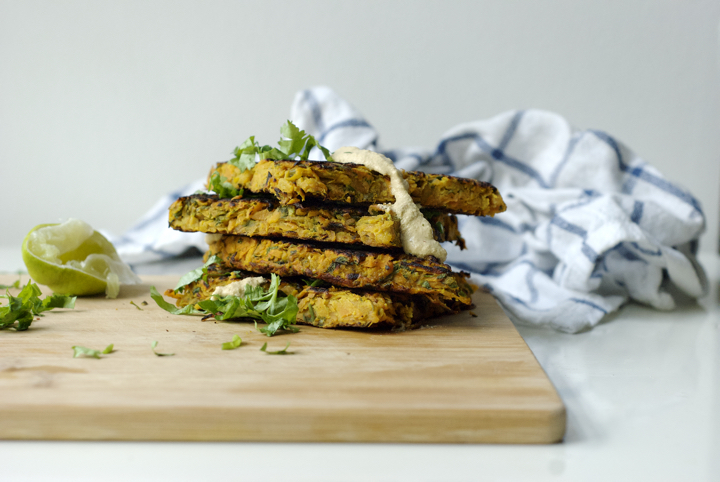
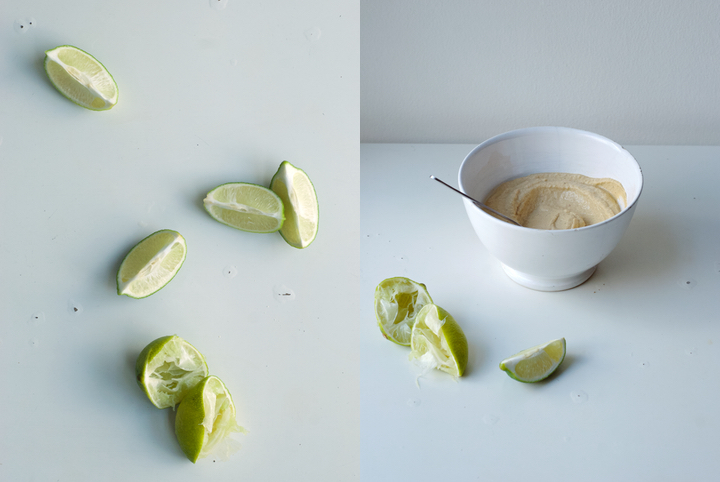
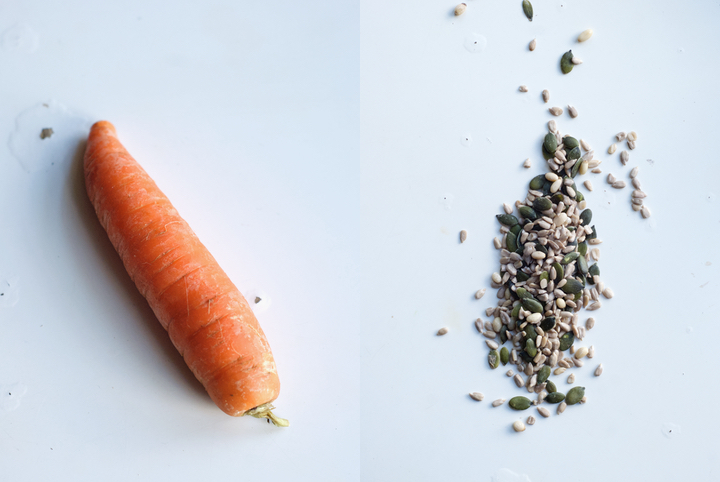
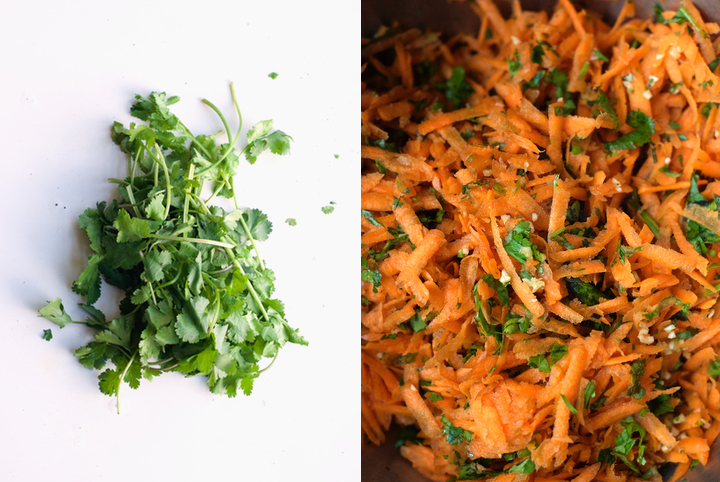
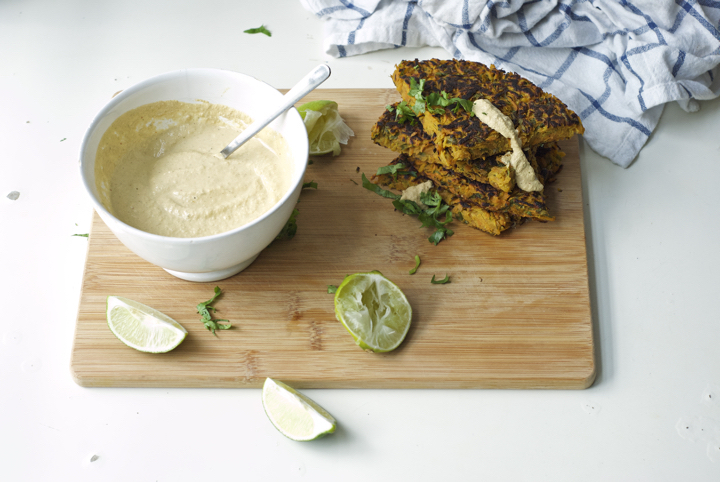
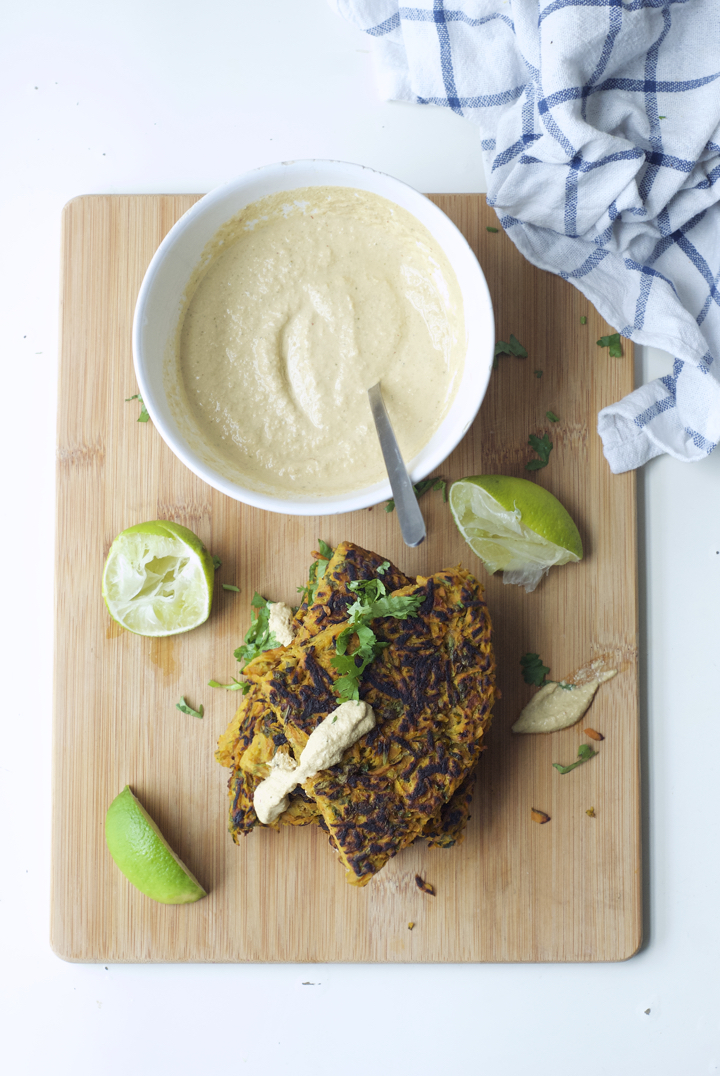
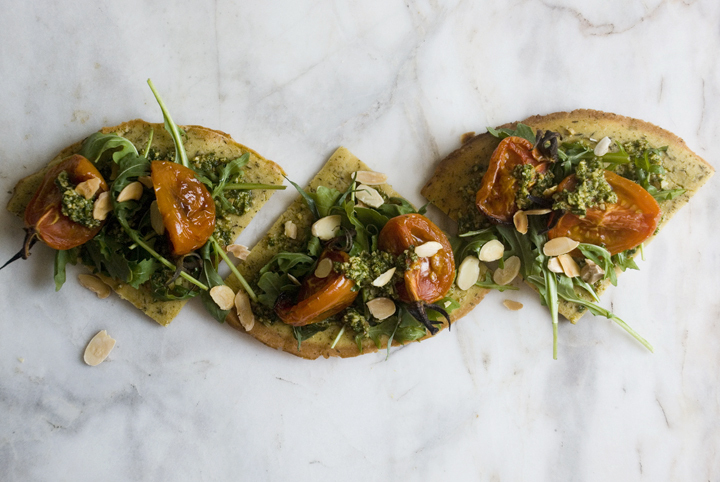
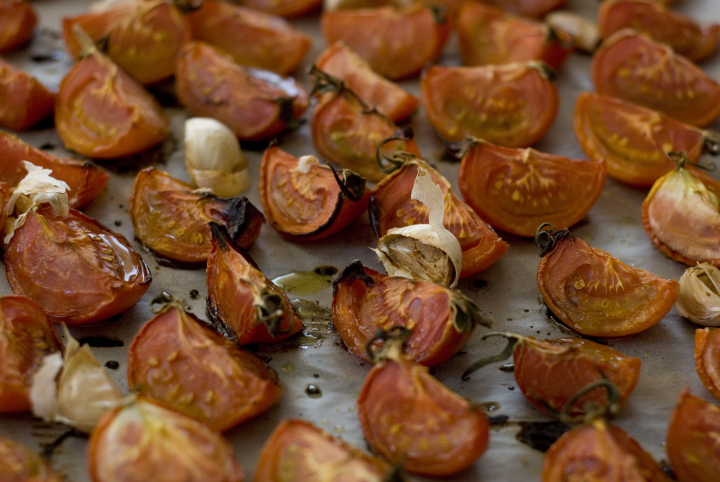
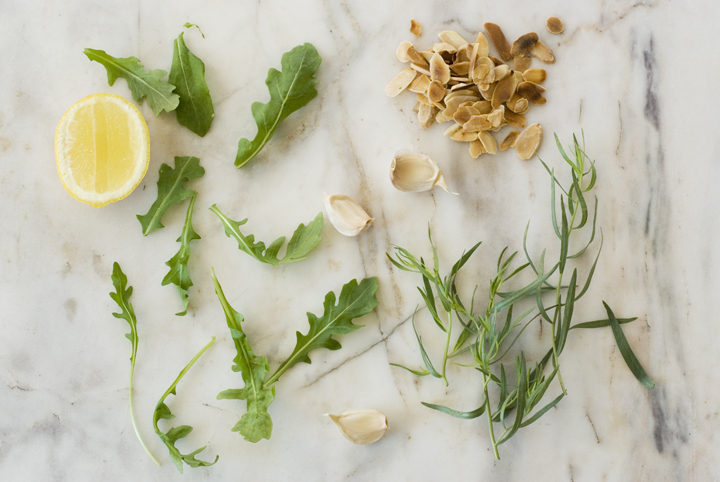
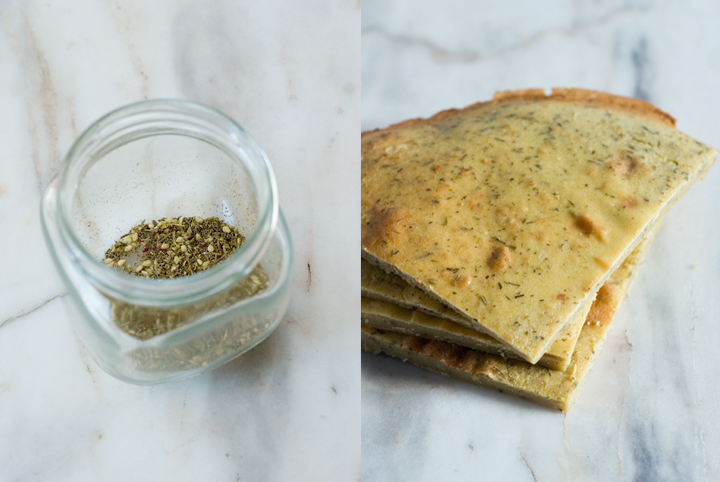
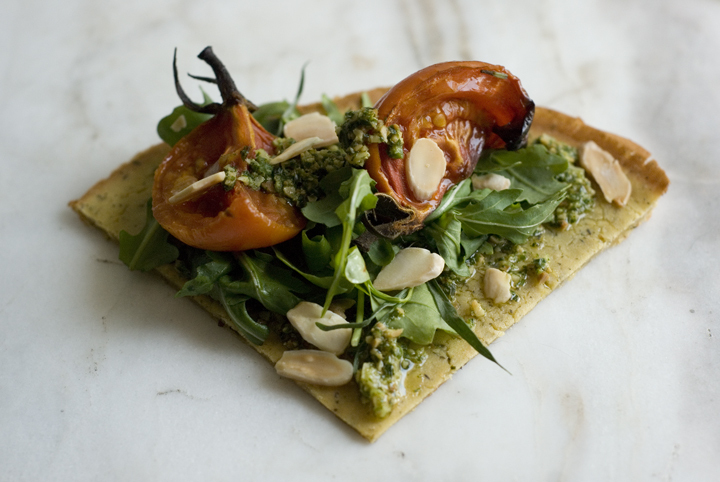
leave a comment